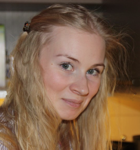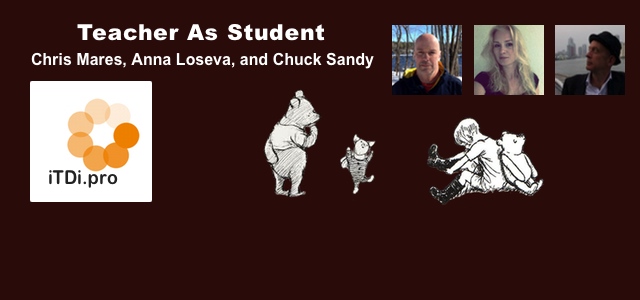Teaching, Learning, and Tae Kwon Do – Chris Mares

While studying Tae Kwon Do I have learnt a lot, not only about Tae Kwon Do, but also about teaching and learning and what it means to be a student.
Usually I look forward to the practice sessions, but not always. Sometimes I feel anxious about my physical ability to do what I am expected to do and sometimes I worry that I may have forgotten something my instructor will expect me to know. I have other fears, too. For example, that I am too old to begin such a demanding activity, that I am not flexible enough, or that I won’t be able to remember various sequences of punches, blocks, and kicks known as forms.
Reflecting in this way I am reminded of the fact that my students, too, feel anxieties about their own abilities and, as a teacher, I should always remember this.
There are other important things I’ve learnt or been reminded of while practicing Tae Kwon Do.
A positive ‘can do’ attitude is vital for teacher and student alike. The feeling of being in the learning process together as an ‘us’ is key. More specifically, the feeling that teacher and student are involved in a joint project to practice and learn in a non-competitive atmosphere and one of mutual support. In Tae Kwon Do all this will is done in an informal atmosphere but one which is respectful and polite, and one in which the teacher is in charge.
I am also reminded as I punch, kick, and block, that learning takes time, effort, a willingness to take risks, and that it can only happen one step at a time.
When we practice in Tae Kwon Do we often work in pairs with someone of a similar level. Occasionally I have felt that I would rather be practicing with my instructor, or at least while being observed by my instructor. However, over time I have realized that all practice is useful. It is also useful to help others who are not yet at the same level. Teaching is an effective way of consolidating one’s own learning. I realize that this is something my English language students need to learn – practice with peers helps.
Repetition of moves in Tae Kwon Do is essential for muscle memory, and to give the mind the space to focus on the next step to be internalized. Our instructor leads the drills and stops occasionally to correct a stance or model a movement. This type of drilling leads to automaticity. Although drilling is not necessarily in vogue in language teaching there is still the same need for automaticity. Meaningful and continued recycling and practice will lead to this. The correction and feedback the instructor gives is also at a meaningful level, the tendency being to focus on one point at a time. This reduces anxiety for the student. This is something I try to remember as a teacher.
Modeling must be clear and broken down into stages. Students cannot focus on everything at a time. Input must be comprehensible and students can only learn at the point they are at which is to say it’s pointless to expect a student to achieve what is not possible at any given point in time.
As I mentioned, the tone of my Tae Kwon Do class is informal. It is also non-competitive in the sense that students are only required to do as well as they can and that if someone can’t do something, they can either not do it, or try to modify what is being practiced. This allows for a sense of security and thus a lowering of the affective filter.
Each class follows a similar pattern. We begin with a brief period of meditation, followed by some stretching and warm up activities. This is followed by basic technique practice which in turn is followed by the practice of forms. This structure sometimes varies and may include practicing rolls and falls, or sparring, or one steps, which is the practice of attack, counter attack. Like the good language classroom, there is a sense of consistency but not predictability. We practice in the knowledge that everything our instructor does with us will help us.
The teaching model in Tae Kwon Do reminds me of an apprenticeship model. A new student will line up with the other students and simply try to follow along as best they can. The instructor or a more senior student will give pointers and support for the new student at an appropriate level. Over time the new student will pick up the various punches, kicks, and blocks and then begin to practice forms and other skills such as sparring.
The most important thing I have learnt as a student is that my own attitude is key. If I view all aspects of the class as an opportunity to practice, learn or help, then I will practice, learn or help. I feel this way in part because that is clearly what my Tae Kwon Do instructor expects. By extension I realize that I may have more impact on my students motivation as teacher than I had previously thought. My expectations need to be clearly articulated, my enthusiasm needs to be apparent, and all students need to know that I am there for them, to help them do the best they can.
Connect with authors, iTDi Associates, Mentors, and Faculty by joining iTDi Community. Sign Up For A Free iTDi Account to create your profile and get immediate access to our social forums and trial lessons from our English For Teachers and Teacher Development courses.










